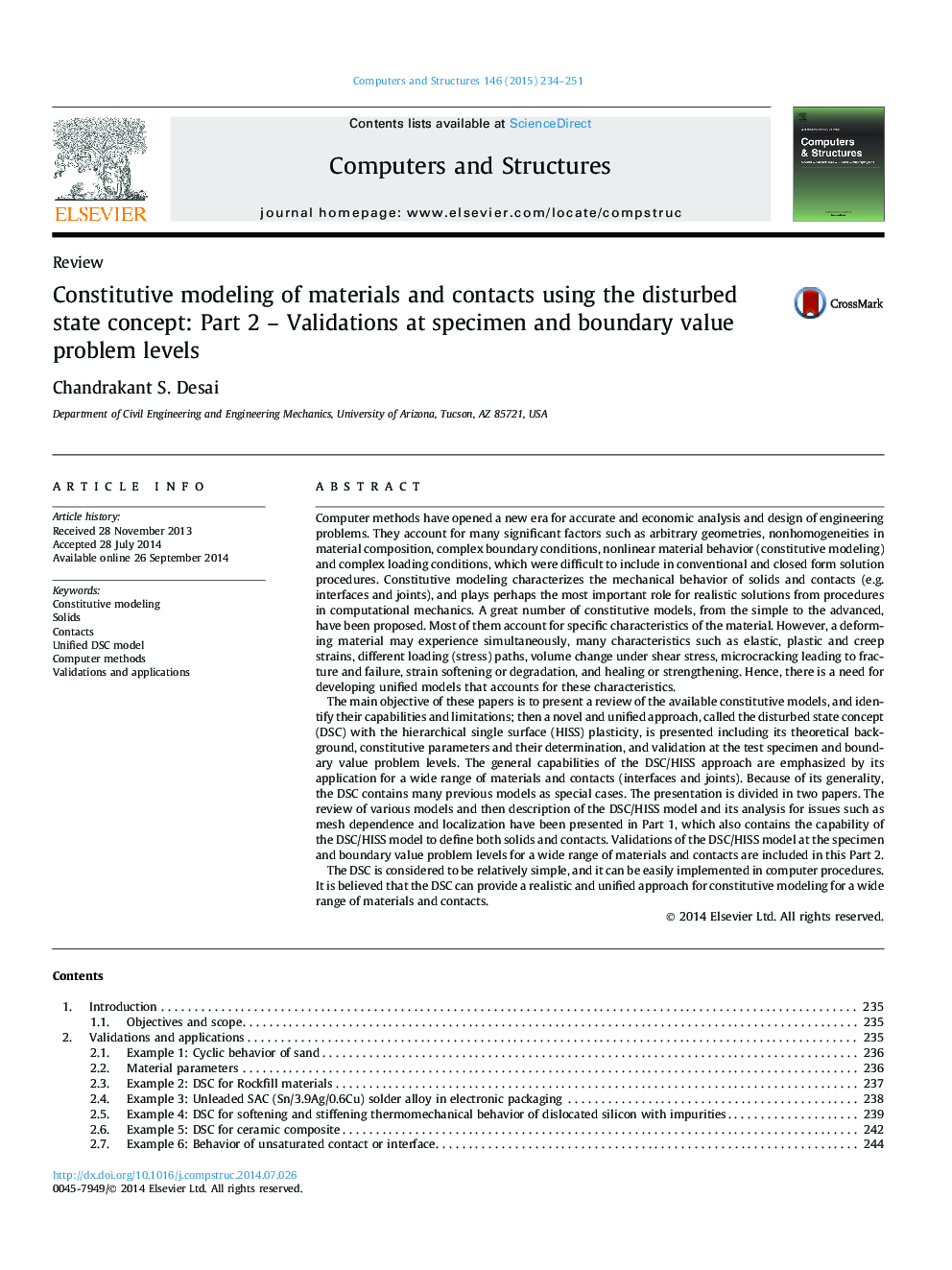| کد مقاله | کد نشریه | سال انتشار | مقاله انگلیسی | نسخه تمام متن |
|---|---|---|---|---|
| 510604 | 865776 | 2015 | 18 صفحه PDF | دانلود رایگان |

Computer methods have opened a new era for accurate and economic analysis and design of engineering problems. They account for many significant factors such as arbitrary geometries, nonhomogeneities in material composition, complex boundary conditions, nonlinear material behavior (constitutive modeling) and complex loading conditions, which were difficult to include in conventional and closed form solution procedures. Constitutive modeling characterizes the mechanical behavior of solids and contacts (e.g. interfaces and joints), and plays perhaps the most important role for realistic solutions from procedures in computational mechanics. A great number of constitutive models, from the simple to the advanced, have been proposed. Most of them account for specific characteristics of the material. However, a deforming material may experience simultaneously, many characteristics such as elastic, plastic and creep strains, different loading (stress) paths, volume change under shear stress, microcracking leading to fracture and failure, strain softening or degradation, and healing or strengthening. Hence, there is a need for developing unified models that accounts for these characteristics.The main objective of these papers is to present a review of the available constitutive models, and identify their capabilities and limitations; then a novel and unified approach, called the disturbed state concept (DSC) with the hierarchical single surface (HISS) plasticity, is presented including its theoretical background, constitutive parameters and their determination, and validation at the test specimen and boundary value problem levels. The general capabilities of the DSC/HISS approach are emphasized by its application for a wide range of materials and contacts (interfaces and joints). Because of its generality, the DSC contains many previous models as special cases. The presentation is divided in two papers. The review of various models and then description of the DSC/HISS model and its analysis for issues such as mesh dependence and localization have been presented in Part 1, which also contains the capability of the DSC/HISS model to define both solids and contacts. Validations of the DSC/HISS model at the specimen and boundary value problem levels for a wide range of materials and contacts are included in this Part 2.The DSC is considered to be relatively simple, and it can be easily implemented in computer procedures. It is believed that the DSC can provide a realistic and unified approach for constitutive modeling for a wide range of materials and contacts.
Journal: Computers & Structures - Volume 146, January 2015, Pages 234–251